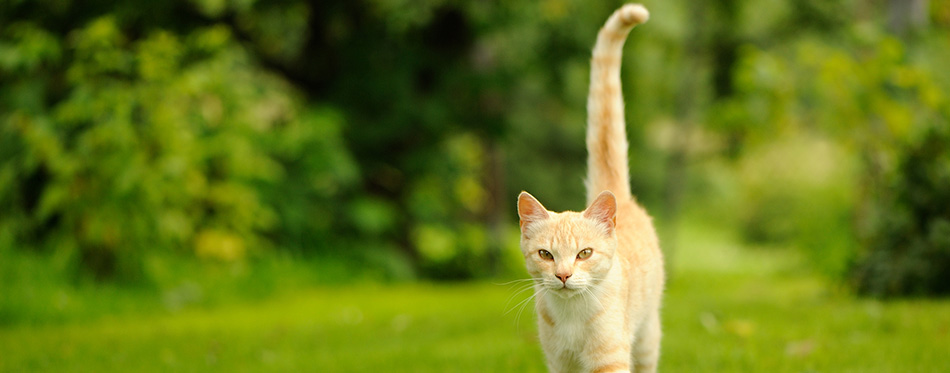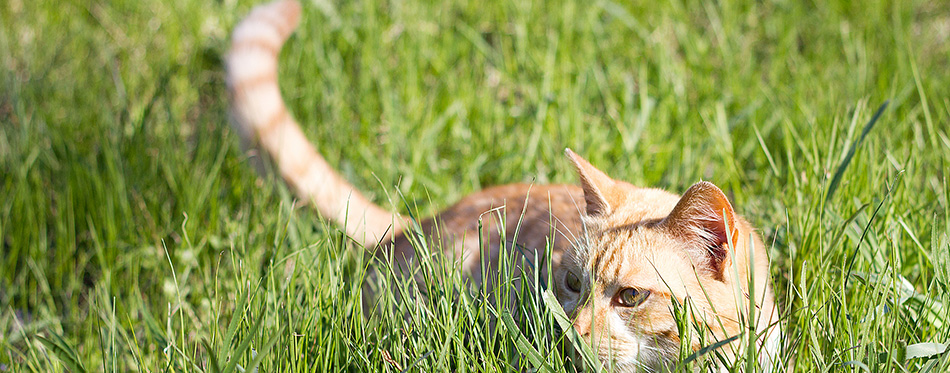Aside from the characteristic meow and other vocalizations, moving the tail is one of the subtler ways that cats can communicate with their fellow kitties and their human friends. Unfortunately, deciphering the real message behind a particular feline tail movement can be tricky. Consider, for instance, the tail-flicking behavior in cats. These are very subtle movements that many pet parents can overlook. They can mean a playful mood or a kitty that is in idle mode. For some, it can be a sign of impending aggression. There are other possible explanations as to why our feline friends flick their tails.
Getting to Know the Feline Tail
Before we get down to the possible reasons for this peculiar feline behavior, let’s first have an idea as to the structure and function of the kitty’s tail.
On average, female cats can have a tail that is about 9.9 inches long. Their male counterparts have longer tails, about 11 inches on the average.
A cat’s tail is like a natural extension of its backbone or spine. It consists of about 19 to 23 spinal bones or vertebrae. A network of tendons, ligaments, and muscles hold these bones together. As the muscles contract, the tail accomplishes a particular movement. The tip of the cat’s tail contains more muscles than the other sections of this appendage. It is because of this unique structure of the feline tail that allows the cat to make very fine and precise movements such as tail-flicking.
Initiating these movements or contractions is the function of nerves that originate from the feline spinal cord. Receiving motor impulses from the brain, the spinal cord conveys these messages to the nerves that supply the muscles of the feline tail. This initiates muscle contractions, allowing the cat to move its tail.
The tail performs a very important role in maintaining balance when the cat is on the move. It serves like a counterweight as the kitty walks a narrow surface. It’s like the balancing pole that tightrope walkers use to establish control of their movements.
A more important function of the cat’s tail is communication. An amiable and content cat will have its tail pointing straight up. You can also see the tip to take on the shape of a hook. This is still a friendly kitty, but may not be so sure about it. The figure of the tail resembles a question mark. A thrashing tail often indicates an irritable, angry, or excited kitty. If the tail is at an angle pointing straight down, it can mean that the kitty is in an aggressive mood.

Reasons Why Cats Flick Their Tails
We now know that cats use their tails as a natural extension of their minds. Hence, any “thought” or “emotion” that they may have can get transmitted to their tail. This is one of the most fundamental reasons why understanding feline tail movement is critical to deciphering what they are trying to convey. As such, when a cat flicks its tail, here are what it could be trying to say.
“Time to Play”
If the tail movement that accompanies the flicking behavior in the cat is one that is in a smooth, wave-like manner, then it’s possible that the kitty is in a playful mood. Cat fanciers and behaviorists do not know why kitties will flick their tails when they want to play. Some say it has something to do with their intense predatory drive. In the wild, felines can use such tail movement to distract or mesmerize potential prey.
Since the cat is conveying an amiable approach, there’s a good chance that the prey animal will let its guard down. The moment the cat sees an opportunity, it does so in one swift motion. As such, one has to be very careful when interacting with a cat that is flicking its tail. It may be in a playful mood one second and go into an annoyed or agitated cat in the next.
The important thing to remember here is to look for other signs of “playfulness”. In addition to flicking its tail, the cat can also lie down perpendicular to the object of its attention. It is showing the other that it is “safe” to come out and play with the cat. Other signs can include ears that face forward and eye contact. The cat can also extend its paws.
When the cat is flicking its tail in a playful gesture, it can involve the entire length of the tail. However, the most classic sign is a bent tip that resembles that of a hook.
Head over to our reviews of Cat Toys and Interactive Cat Toys for more choices.
“I’m Getting Over-stimulated, Irritated, and Annoyed!”
As mentioned, a playful cat can turn into an agitated kitty in an instant. This is often the result of overexcitement. For instance, you may be playing with your kitty displaying its characteristic smooth-flicking tail. But you’ve worked your cat too much that it now wants to up the level of the game. As such, you may notice its playful “swipes” turn into something more than a pat. They may now include sinking some of its claws into your flesh.
An agitated cat will often flick its tail in a very characteristic way. It often does it in bursts, instead of the slow and smooth motions in a playful kitty. They flick and thump their tails in a more intermittent manner. The cat is telling you that it’s getting “stimulated” or “worked up”. You should always proceed with caution whenever interacting with a cat that is flicking its tail in bursts.
Try correlating this observation with other feline body language signs. For instance, an agitated kitty will have its eyes opened wide complete with dilatation of the pupils. It can also have its ears turned a bit to the side. Agitated cats can also present with a tense body; although there are those that will assume a crouching position. Look at its front paws. An agitated feline will often raise one of its front paws.
A cat that’s flicking its tail in an agitated manner is telling you to slow down in your activities. You’re working it up to a point that it may no longer be safe for both of you.
You may also like our article on Laser Pointer for Cats.

“Back Off!”
If you see a feline that is flicking its tail in a very vigorous manner, then it’s a good indication that the cat is telling you to back off. Do not go anywhere near this kitty. It is telling you that it’s not in a good mood. Now is not a good time to go near it as it can meet you with its claws fully extended.
You may also notice the tail movement to emanate from the base. Unlike the playful gesture where only a certain section of the tail moves, an aggressive cat will move the whole tail. Moreover, the feline will hold its tail very low. Some cats can also puff up their tail like the image of the Halloween cat. Others can flex the tail.
There are other signs that can help rule an aggressive tendency in a cat that’s flicking its tail. For instance, if you notice its eyes to have constricted pupils, then there’s a chance that it is being aggressive. It can also flatten its ears or turn it backwards. Aggressive cats can also face their “targets” or “opponents” face on. They will also orient their body facing the opponent. They may also show their teeth while producing the characteristic “hiss” of an angry and violent kitty.
If you see any of these signs and not only the frantic flicking of the tail, then it’s best to keep your distance. It’s a lot safer this way.
Related Post: Cat Calming Spray
“Chill Out and Relax”
If your feline friend flicks its tail while it is lying in its favorite nook as if it is passing time, then perhaps it is. Cat fanciers say this is a sign of an idle kitty. It tells you that it is chilling out. It’s siesta time, allowing it to relax and find contentment in doing nothing else but lying down in its bed or favorite place.
There are those who say that a cat flicking its tail in an idle manner with its eyes closed may be dreaming. While this is a different matter in itself, there is an ongoing notion that cats dream. And when they dream, they often manifest a number of physical signs such as twitching and vocalizations. The flicking motion of the tail is what some pet parents consider as a manifestation that the cat is having a dream.
A feline that’s flicking its tail in this manner is one that is content, happy, and relaxed. However, you should still exercise caution when approaching such a kitty. Under no circumstance should you bother it as its relaxed state can turn into an agitated state in a flash.
Kitties flick their tails for a variety of reasons. It can be because they’re in a playful mood or are already agitated. In some cases, they may be showing signs of aggression. Others, however, may convey that they are having a relaxing time.
Source:
- Translating Feline Body Language – Paws Chicago

